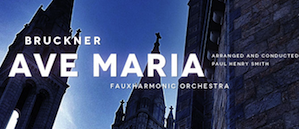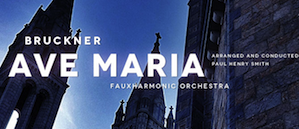
A "friend in the business" wrote to me about uses of the Vienna Symphonic Library and alternatives to it, a whole big (relatively) new field with enormous potential impact on music:
Check out Paul Smith's Fauxharmonic for a virtuoso collection of music created with the VSL and other collections of orchestral samples. I often disagree with Paul Smith's tempi (which of course are in practice adjustable), but his realizations are uncannily live sounding. Many composers hire him to create realistic demo recordings that sound 1000% better than a typical midi demo produced automatically by Digital Performer or Sibelius.There are many alternatives to VSL, mainly used by film/TV composers for low budget projects where real orchestras would break the budget.
But Paul Smith's Fauxharmonic is a thriving business of great value to composers, who can get a much better sense of what their music would sound like in a near-perfect performance than they can get simply by letting Sibelius play the score with one of its built-in virtual orchestras. I found it remarkable.
Of course one glaring problem is that the Fauxharmonic can negotiate difficult passages better than live musicians, so composers may not get a realistic view of how their piece will actually work in performance.
Probably the next step is to create difficulty-level models (like age-graded reading-level vocabulary checkers used by textbook and other writers) so a score can be automatically graded "unplayable," "ok for A-level orchestras" "ok for college/high-school," etc.

